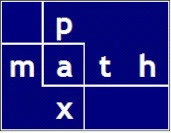As some builders do: buying a lot covered in trees, hiring a guy to uproot the trees on the lot, digging extensive and varied holes all over the lot, then throwing a load or two of sand on it, having the guy drive back and forth on it — is a pitiful way to approach site and foundation preparation.
How much organic material is left in the ground? What is the optimum moisture content? What compaction is achieved? What Proctor density? What quality controls are in place? What tests are done to assure the site is conditioned to evenly support a building foundation? What inspection is done by the city to assure proper materials and methods?
What recourse does the homebuyer (which just might be you, or a member of your family) have if/when there are foundation problems later?
The approach is seat of the pants, it follows a recipe that may or may not work.
Notice this doesn’t consider the size of the house or whether it’s two story.
In my view — unacceptable.
If the builder thinks he can build a house, and sell it for a few hundred thousand dollars, surely he must be aware of site issues, willing to employ proper geotechnical testing and guidance, capable of executing the site preparation in accordance, and able to install a proper foundation for that house.
Some other builders take a more seasoned approach.
Clear and grub the site. Clearing is defined as removing and disposing of all unwanted surface material, such as trees, brush, grass, weeds, downed trees, and other material. Grubbing is defined as removing and disposing of all unwanted vegetative matter from underground, such as stumps, roots, buried logs, and other debris.
Organic material must be removed from a foundation site because the eventual rotting of stumps, roots, logs will cause voids and therefore uneven settlement.
Elevate the foundation site so that drainage is positively sloped away from the house. Consider the likelihood of a 1″ to 2″ house settlement in the slope calculation.
Engage a soil testing firm. Test the fill for proper compaction, say 90% of modified Standard Proctor density. Properly file all paperwork for future reference.
Haul in a quality clay sand fill. Sand alone will lose structure and shape during excavation for underground utility lines and grade beams. That is, any compaction that may have been achieved is easily lost when cuts are made to install water, sewer, electrical, sprinkler, and foundation elements such as grade beams. Loss of compaction leads to ill-formed grade beams, loss of clear cover on rebar, erosion and rutting that may lead to uneven settlement. A good proportion of clay offers stability to the soil even with cuts and after heavy rains.

The house above was recently constructed and listed for over $800,000.
This approach is similar to that used in commercial and industrial work. It might not be obvious, but the soil doesn’t know which kind of building it is supporting. Therefore, if commercial procedures protect their structure from foundation troubles then the same procedures will protect your house from foundation troubles.
Also, ask yourself now — as a homebuyer — do you want to have a flawed installation and do you want to have damage to floors, walls, ceilings, and do you want to pay a foundation repair company thousands of dollars to put a band aid on your home? Remember, your builder wont be much interested down the road when you are having trouble.
Let’s say your builder objects to following a few well respected guidelines; what possible reasons could he have for cutting corners? What does he know that the good builders don’t know? Will he give you the difference in cost or will he pocket more profit? Is he willing to trade good construction practices for a shortening of the schedule? And finally, if the dirt contractor is unwilling to use customary testing, why would anyone hire him?
If you’re going to build it, build it right.
https://besthomeinthesouth.com/dirty-secrets-about-dirt-work/
Click for Soil Compaction (wiki)
The Proctor compaction test is a laboratory method of experimentally determining the optimal moisture content at which a given soil type will become most dense and achieve its maximum dry density.


